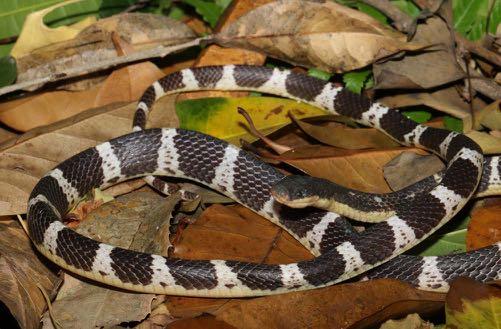2021 APPENDIX
SPECIES
PLANT
PERROTTETIA TARONENSIS
DIDYMOCARPUS VICKIFUNKIAE
CLEYERA BOKORENSIS
BEILSCHMIEDIA BOLAVENENSIS
MACHILUS CHAMPASAKENSIS
SONERILA ERECTIFOLIA
SONERILA SOUVANNII
STERCULIA BOLAVENENSIS
WIKSTROEMIA BOLAVENENSIS
ASPIDISTRA PARTITA
SONERILA BOLAVENENSIS
CEROPEGIA LONGICAUDATA
PARABOEA KHOTAMIAE
BEGONIA GLABRITEPALA
BEGONIA HETEROCANTHA
BEGONIA LANXANGENSIS
BEGONIA PARVIGLANDULOSA
BEGONIA PSEUDOBRANDISIANA
BEGONIA TRIPARTIFOLIA
BEGONIA VIRIDITENEBRIS
BEGONIA CATARACTA
BEGONIA VOLUPTUARIA
STROBILANTHES BOLAVENENSIS
IMPATIENS ROSTRATA
DIDYMOCARPUS ANGUSTIFLORUS
DIDYMOCARPUS BOLAVENENSIS
RESEARCHERS
COUNTRY
Bartholomew, B., Armstrong, K. E., Li, R., & Fritsch, P. W. Myanmar & China
Prasanna, N. S., & Gowda, V.
Tagane, S., Nagamasu, H., Chhang, P., Son, H. T., Toyama, H., & Yahara, T.
Tagane, S., Phetlasy, S., & Yahara, T.
Tagane, S., Phetlasy, S., & Yahara, T.
Phonepaseuth, P., Souladeth, P., Souvannakhoummane, K., Vongthavone, T., & Tagane, S.
Phonepaseuth, P., Souladeth, P., Souvannakhoummane, K., Vongthavone, T., & Tagane, S.
Tagane, S., Souladeth, P., Kongxaysavath, D., Rueangruea, S., Suddee, S., Suyama, Y., Suzuki, E. & Yahara, T.
Tagane, S., Souladeth, P., Kongxaysavath, D., Rueangruea, S., Suddee, S., Suyama, Y., Suzuki, E. & Yahara, T.
Ding, H. B., Xiong, K. C., Yang, B., Yin, J. T., Bouamanivong, S., & Tan, Y. H.
Souladeth, P., Tagane, S., Suddee, S., Kongxaysavath, D., & Rueangruea, S.
Phonepaseuth, P., & Rodda, M.
Phonepaseuth, P., Souvannakhoummane, K., Tagane, S., Souladeth, P., & Yahara, T.
Keooudone, S., & Soulivanh, L.
Keooudone, S., & Soulivanh, L.
Keooudone, S., & Soulivanh, L.
Keooudone, S., & Soulivanh, L.
Keooudone, S., & Soulivanh, L.
Keooudone, S., & Soulivanh, L.
Keooudone, S., & Soulivanh, L.
Lanorsavanh, S., Souvannakhoummane, K., Lamxay, V., & Chanthavongsa, K.
Lanorsavanh, S., Souvannakhoummane, K., Lamxay, V., & Chanthavongsa, K.
Yamazaki, K., Souladeth, P., & Tagane, S.
Souvannakhoummane, K., Newman, M. F., Lanorsavanh, S., & Suksathan, P.
Souvannakhoummane, K., Lanorsavanh, S., Tagane, S., Souladeth, P., Phonepaseuth, P., Pongamornkul, W., & Lamxay, V.
Souvannakhoummane, K., Lanorsavanh, S., Tagane, S., Souladeth, P., Phonepaseuth, P., Pongamornkul, W., & Lamxay, V.
Myanmar & India
Cambodia & Viet
Nam
Laos
Laos
Laos
Laos
Laos
Laos
Laos
Laos
Laos
Laos
Laos
Laos
Laos
Laos
Laos
Laos
Laos
Laos
Laos
Laos
Laos
Laos
Laos
54 NEW SPECIES DISCOVERIES IN THE GREATER MEKONG 2021-22
DIDYMOCARPUS LAOTICUS
Souvannakhoummane, K., Lanorsavanh, S., Tagane, S., Souladeth, P., Phonepaseuth, P., Pongamornkul, W., & Lamxay, V.
DIDYMOCARPUS TRILOBUS Souvannakhoummane, K., Lanorsavanh, S., Tagane, S., Souladeth, P., Phonepaseuth, P., Pongamornkul, W., & Lamxay, V.
HEMIBOEA OLIVIFOLIA
PARABOEA PLANIFLORA
OPHIOPOGON ROBUSTUS
PELIOSANTHES RUBRA
PHANERA LAOTICA
PHANERA RUBRA
ASPIDISTRA NITENS
CYMBILABIA SOURIOUDONGII
IMPATIENS SUBFALCATA
BEGONIA CASSEABRI
BEGONIA PERSISTENS
BEGONIA LATIBRACTEATA
BEGONIA NATMATAUNGENSIS
BEGONIA AMNICOLA
BEGONIA SAGAINGENSIS
Souvannakhoummane, K., Lanorsavanh, S., Tagane, S., Souladeth, P., Phonepaseuth, P., Pongamornkul, W., & Lamxay, V.
Souvannakhoummane, K., Lanorsavanh, S., Tagane, S., Souladeth, P., Phonepaseuth, P., Pongamornkul, W., & Lamxay, V.
Averyanov, L. V., Tanaka, N., Nguyen, K. S., Maisak, T. V., Nuraliev, M. S., Vislobokov, N. A., Romanov, M., S. & Son, H. T.
Averyanov, L. V., Tanaka, N., Nguyen, K. S., Maisak, T. V., Nuraliev, M. S., Vislobokov, N. A., Romanov, M., S. & Son, H. T.
Mattapha, S., Lanorsavanh, S., Lamxay, V., & Chanthavongsa, K.
Mattapha, S., Lanorsavanh, S., Lamxay, V., & Chanthavongsa, K.
Averyanov, L. V., Nguyen, K. S., Tillich, H. J., Krupkina, L. I., Maisak, T. V., & Sokolova, I. V.
Souvannakhoummane, K., Lanorsavanh, S., Rakthai, P., Kumar, P., & Gale, S. W.
Souladeth, P., Tagane, S., Suyama, Y., Ishii, N., Nagahama, A., & Souvannakhoummane, K.
Maw, M. B., Hong-Bo, D. I. N. G., Bin, Y. A. N. G., Win, P. P., & Yun-Hong, T. A. N.
Maw, M. B., Hong-Bo, D. I. N. G., Bin, Y. A. N. G., Win, P. P., & Yun-Hong, T. A. N.
Maw, M. B., Hong-Bo, D. I. N. G., Bin, Y. A. N. G., Win, P. P., & Yun-Hong, T. A. N.
Maw, M. B., Hong-Bo, D. I. N. G., Bin, Y. A. N. G., Win, P. P., & Yun-Hong, T. A. N.
Maw, M. B., Hong-Bo, D. I. N. G., Bin, Y. A. N. G., Win, P. P., & Yun-Hong, T. A. N.
Maw, M. B., Hong-Bo, D. I. N. G., Bin, Y. A. N. G., Win, P. P., & Yun-Hong, T. A. N.
BEGONIA CHINDWINENSIS Maw, M. B., Hong-Bo, D. I. N. G., Bin, Y. A. N. G., Win, P. P., & Yun-Hong, T. A. N.
ARTABOTRYS CHITKOKOI Hein, K. Z., Naive, M. A. K., & Chen, J.
PETROCOSMEA VILLOSA Middleton, D. J., Shin, T., & Baba, Y.
PREMNA CARIDANTHA
ERIOBOTRYA SHANENSE
Tan, Y. H., Min, D. Z., Ding, H. B., Yang, B., Maw, M. B., & Li, B.
Kang, D. H., Ong, H. G., Lee, J. H., Jung, E. K., Kyaw, N. O., Fan, Q., & Kim, Y. D.
CANTHIUM OBSCURUM De Wilde, W. J. J. O., & Duyfjes, B. E. E.
CURCUMA CHANTARANOTHAI Saensouk, S., Boonma, T., & Saensouik, P.
CURCUMA RANGSIMAE Saensouk, S., Boonma, T., & Saensouik, P.
CURCUMA CHARANII Saensouk, S., Boonma, T., & Saensouik, P.
CURCUMA PHRAYAWAN Saensouk, S., Boonma, T., & Saensouik, P.
CURCUMA PUANGPENIAE Saensouk, S., Boonma, T., & Saensouik, P.
CURCUMA PURPURATA Saensouk, S., Boonma, T., & Saensouik, P.
Laos
Laos
Laos
Laos
Laos
Laos
Laos
Laos
Laos
Laos
Laos
Myanmar
Myanmar
Myanmar
Myanmar
Myanmar
Myanmar
Myanmar
Myanmar
Myanmar
Myanmar
Myanmar
Myanmar, Thailand, Laos, Viet Nam & China
Thailand
Thailand
Thailand
Thailand
Thailand
Thailand
NEW SPECIES DISCOVERIES IN THE GREATER MEKONG 2021 & 2022 55
CURCUMA WANENLUEANGA Saensouk, S., Boonma, T., Thomudtha, A., Thomudtha, P., & Saensouk, P.
ARTABOTRYS ANGUSTIPETALUS Photikwan, E., Damthongdee, A., Jongsook, H., & Chaowasku, T.
OROPHEA SICHAIKHANII Damthongdee, A., Aongyong, K., & Chaowasku, T.
GONIOTHALAMUS ROSEIPETALUS Leeratiwong, C., Chalermglin, P., & Saunders, R. M.
GONIOTHALAMUS SUKHIRINENSIS Leeratiwong, C., Chalermglin, P., & Saunders, R. M.
ANTHEROPORUM PUUDJAAE Mattapha, S., & Tetsana, N.
PHAEANTHUS PIYAE Wiya, C., Aongyong, K., Damthongdee, A., Baka, A., & Chaowasku, T.
ASPLENIUM APPRESSIFOLIUM Petchsri, S., & Boonkerd, T.
CURCUMA RANGJUED Saensouk, S., Boonma, T., & Saensouk, P.
HEMIBOEA CHANII
Nguyen, C. H., Van Nguyen, L., Nguyen, K. S., Egorov, A. A., & Averyanov, L. V.
KAEMPFERIA UNIFOLIA Saensouk, P., & Saensouk, S.
KAEMPFERIA ISANENSIS Saensouk, P., & Saensouk, S.
PARABOEA KHAOYAICA Kaitongsuk, S., Triboun, P., Suddee, S., Ue-Aree, P., & Sungkaew, S.
CURCUMA ARUNA Maknoi, C., Saensouk, S., Saensouk, P., Rakarcha, S., & Thammarong, W.
CURCUMA PITUKII Maknoi, C., Saensouk, S., Saensouk, P., Rakarcha, S., & Thammarong, W.
KAEMPFERIA UTTARADITENSIS Meechonkit, P., & Picheansoonthon, C.
KAEMPFERIA KAMTHORNII Meechonkit, P., & Picheansoonthon, C.
CURCUMA SIAMENSIS Saensouk, P., Boonma, T., & Saensouk, S.
STEMONA NAMKHUNENSIS Promprom, W., & Chatan, W.
CORYBAS PAPILLATUS
Inuthai, J., Chantanaorrapint, S., Poopath, M., Tetsana, N., Kiewbang, W., & Suddee, S.
CAUSONIS SESSILIFOLIA Trias-Blasi, A., Poopath, M., Lu, L. M., & Parmar, G.
RHYNCHOGLOSSUM AUSCULUM
CURCUMA LITHOPHILA
CURCUMA RUFOSTRIATA
Pattharahirantricin, N., & Poopath, M.
Soonthornkalump, S., Pungpairote, T., Niwesrat, S., & LeongSkornickova, J.
Soonthornkalump, S., Pungpairote, T., Niwesrat, S., & LeongSkornickova, J.
GYMNEMA WIYADAE Kidyoo, A.
ALPHONSEA ANNULATA
KAEMPFERIA JENJITTIKULIAE
SARACA THAILANDICA
THUNBERGIA AMPHAII
POLYALTHIA CHALERMGLINII
Leeratiwong, C., Chalermglin, P., & Johnson, D. M.
Nopporncharoenkul, N., Somnoo, T., Tanming, W., & Maknoi, C.
Pongamornkul, W., Panyadee, P., Muangyen, N., & Inta, A.
Suwanphakdee, C., Khammonkol, K., Middleton, D., & Suddee, S.
Bunchalee, P. A. S. A. K. O. R. N., Johnson, D. M., Murray, N. A., & Chalermglin, P. I. Y. A.
POLYALTHIA CHAYAMARITANA Bunchalee, P. A. S. A. K. O. R. N., Johnson, D. M., Murray, N. A., & Chalermglin, P. I. Y. A.
ERANTHEMUM DECUMBENS
POLYALTHIA CHANTARANOTHAII
TYPHONIUM PHUOCBINHENSE
ASPIDISTRA PELTATA
Thailand
Thailand
Thailand
Thailand
Thailand
Thailand
Thailand
Thailand
Thailand
Thailand
Thailand
Thailand
Thailand
Thailand
Thailand
Thailand
Thailand
Thailand
Thailand
Thailand
Thailand
Thailand
Thailand
Thailand
Thailand
Thailand
Thailand
Thailand
Thailand
Thailand
Thailand
Kladwong, P., & Chantaranothai, P.
Bunchalee, P. A. S. A. K. O. R. N., Johnson, D. M., Murray, N. A., & Chalermglin, P. I. Y. A.
Croat, T.
Averyanov, L. V., Truong, B. V., Trinh, B. N., Dang, S. V., Bui, V. H., Le, T. A., Nguyen, T. H. A., Do, T. T. H., Nguyen, C. V.., Maisak, T. V., Nguyen, K. S. & Tillich, H. J.
ARISTOLOCHIA VUQUANGENSIS Van Do, T., Nguyen, H. V., & Le, K. D.
Thailand & Laos
Thailand & Laos
Viet Nam
Viet Nam
Viet Nam
56
ARACHNIODES VIETNAMENSIS
ASPIDISTRA LILIIFLORA
ASPIDISTRA SESSILISTIGMA
PETROCODON VIETNAMENSIS
Lu, N. T., Nguyen, L. P., Le, C. T., Nguyen, T. T., & Zhang, L.
Averyanov, L. V., Wynn-Jones, B., Nguyen, T. H., Nguyen, K. S., Tillich, H. J., Nguyen, V. D., Maisak, T. V. & Chu, C. X.
Averyanov, L. V., Wynn-Jones, B., Nguyen, T. H., Nguyen, K. S., Tillich, H. J., Nguyen, V. D., Maisak, T. V. & Chu, C. X.
Xin, Z. B., Do, T. V., Fu, L. F., Huang, Z. J., Maciejewski, S., & Wen, F.
BAMBUSA NGHIANA Tran, V. T.
ASPLENIUM UANGBINHENSE
Xu, K. W., Lu, N. T., Zhou, X. M., Zhang, L., & Zhang, L. B.
PSEUDOCHIRITA TRIFOLIATA Wen, F.
ZINGIBER MAGANG
ZINGIBER TAMII
Ngọc-Sâm, L. Ý., Đăng-Giáp, Đ. Ỗ., Ngọc-Giang, C. A. O., Trương, B. V., Nguyễn, V. T., & Leong-Škorničková, J.
Ngọc-Sâm, L. Ý., Đăng-Giáp, Đ. Ỗ., Ngọc-Giang, C. A. O., Trương, B. V., Nguyễn, V. T., & Leong-Škorničková, J.
ARISTOLOCHIA LUUDAMCUI Phan, L. K., Wanke, S., Neinhuis, C., & Van Do, T. R. U. O. N. G.
LITHOCARPUS BIDOUPENSIS Van Ngoc, N., Binh, H. T., Nagahama, A., Tagane, S., Toyama, H., Matsuo, A.,Suyama, Y. & Yahara, T.
LITHOCARPUS CONGTROIENSIS
LITHOCARPUS HONGIAOENSIS
ASPIDISTRA MAGNIFICA
Van Ngoc, N., Binh, H. T., Nagahama, A., Tagane, S., Toyama, H., Matsuo, A.,Suyama, Y. & Yahara, T.
Van Ngoc, N., Binh, H. T., Nagahama, A., Tagane, S., Toyama, H., Matsuo, A.,Suyama, Y. & Yahara, T.
Lý, N. S., Nguyen, K. S., Hoàng, T. S., Đỗ, V. N., & Tillich, H. J.
RAPHIOCARPUS AXILLARIS Middleton, D. J., Nguyễn, Q. B., Trần, H. Đ., & LeongŠkorničková, J.
ARISTOLOCHIA QUANGNAMENSIS
PRIMULINA SCUTELLIFOLIA
BULBOPHYLLUM VULINHAE
BEGONIA CATBENSIS
CHIMONOCALAMUS BIDOUPENSIS
Van Do, T., Lai, H. V., & Le, K. D.
Vu, N. L., Nguyen, T. Q. T., Tran, G., Nguyen, Q. D., & Luu, H. T.
Duong, M. T. T. N., Son Dang, V., Averyanov, L. V., Tam Truong, Q., Amsler, R., & Vuong Truong, B.
Dong, L. N., Nguyen, K. S., Shui, Y. M., Nguyen, H. Q., Xu, W. B., & Nguyen, X. K.
Vinh, T. T., Nguyen, H. N., Duy, N. V., & Tran, V. T.
DENDROBIUM PARAHENDERSONII Van Canh Nguyen, L. V., Maisak, T. V., Nguyen, T. L. T., & Van Khuong Nguyen, B. V. T.
CYNANCHUM QUANGBINHENSE
PELIOSANTHES CONVALLARIOIDES
TYPHONIUM VIETNAMENSE
CAMELLIA PROENSIS
BEGONIA MANGDENENSIS
RHODODENDRON TEPHROPEPLOIDES
BEILSCHMIEDIA DANHKYII
Nuraliev, M. S.
Averyanov, L. V., Tanaka, N., Nguyen, K. S., Maisak, T. V., Nuraliev, M. S., Vislobokov, N. A., Romanov, M., S. & Son, H. T.
Van, H. T., Van Son, L. E., Nguyen-Phi, N., Nguyen, Q. D., Nguyen, T. Q. T., Nguyen, H. C., & Luu, H. T.
Hoi, Q. V., Dung, L. V., Doudkin, R. V., Averyanov, L. V., Thinh, B. B., Lieu, N. T., & Truong, L. H.
Hoang, T. S., Lin, C. W., & Vu, A. T.
Baines, R. A., Chamberlain, D. F., Nguyen, V. D., & Quang, B. H.
Quang, B. H., Tagane, S., Viet, H. N., & Canh, T. T.
THOTTEA AROANGENSIS Le, T. A., Dinh, D., Doan, Q. T., Nguyen, Q. H. A., & Tagane, S.
CHAYAMARITIA VIETNAMENSIS Xin, Z. B., Fu, L. F., Maciejewski, S., Huang, Z. J., Van Do, T., & Wen, F.
CAMELLIA FLOSCULORA Le, V. S., Curry, A. S., Truong, Q. C., Luong, V. D., & Nguyen, T. L.
CLAOXYLON LANGBIANGENSE Nagahama, A., Tagane, S., Zhang, M., Van Ngoc, N., Binh, H. T., Cuong, T. Q., Nagamasu, H., Toyama, M., Tsuchiya, K. & Yahara, T.
Viet Nam
Viet Nam
Viet Nam
Viet Nam
Viet Nam
Viet Nam
Viet Nam
Viet Nam
Viet Nam
Viet Nam
Viet Nam
Viet Nam
Viet Nam
Viet Nam
Viet Nam
Viet Nam
Viet Nam
Viet Nam
Viet Nam
Viet Nam
Viet Nam
Viet Nam
Viet Nam
Viet Nam
Viet Nam
Viet Nam
Viet Nam
Viet Nam
Viet Nam
Viet Nam
Viet Nam
Viet Nam
NEW SPECIES DISCOVERIES IN THE GREATER MEKONG 2021 & 2022
ARDISIA PATENTIRADIOSA
ROHDEA DANGII
Nuraliev, M. S., Kuznetsov, A. N., Kuznetsova, S. P., & Hu, C. M.
Nguyen, K. S., Nguyen, P. H., Tran, D. B., Tanaka, N., & Averyanov, L. V.
QUERCUS NGOCHOAENSIS Binh, H. T., Van Ngoc, N., Son, H. T., Tagane, S., & Yahara, T.
BEGONIA VILLOSULA Hoang, T. S., & Lin, C. W.
BEGONIA LOPHURA Hoang, T. S., & Lin, C. W.
BULBOPHYLLUM XUANSONII Nguyen, D. H., Averyanov, L. V., Van Son, D. A. N. G., Pham, P. D., Maisak, T., Van Huong, B. U. I., ... & Truong, B. V.
Viet Nam
Viet Nam
Viet Nam
Viet Nam
Viet Nam
Viet Nam
LITOSTIGMA NAPOENSE You-Sheng, C., Huang, Y. F., Xu, L. S., & Wang, B. M. Viet Nam & China
LOMARIOPSIS LONGINI Wu, Y. H., Sun, C. Y., Ebihara, A., Lu, N. T., Rouhan, G., & Kuo, L. Y.
FISH
GRAMMATONOTUS BIANCHI Lisher, M. W., Thein, H. T. U. N., & Psomadakis, P. N.
PSILORHYNCHUS MAGNAOCULUS Shangningam, B., & Kosygin, L.
BLEEKERIA ALBICAUDA Psomadakis, P. N., Yoshinaga, T., Wah, Z., & Ida, H.
CHELIDOPERCA MYATHANTUNI
CHELIDOPERCA FLAVIMACULA
MUSTELUS ANDAMANENSIS
BLEEKERIA NIGRILINEA
MEADIA MINOR
AMPHIBIAN
GEKKO KHUNKHAMENSIS
LIMNONECTES BAGOYOMA
LIMNONECTES BAGOENSIS
TYLOTOTRITON UMPHANGENSIS
LIMNONECTES PSEUDODORIAE
ANSONIA KAREN
VIETNAMOPHRYNE VUQUANGENSIS
MICRYLETTA MELANOPS
CYRTODACTYLUS CHUNGI
CYRTODACTYLUS ORLOVI
MICROHYLA DAKLAKENSIS
Psomadakis, P. N., Gon, O., & Htut, T.
Psomadakis, P. N., Gon, O., & Htut, T.
White, W. T., Arunrugstichai, S., & Naylor, G. J.
Psomadakis, P. N., Yoshinaga, T., Wah, Z., & Ida, H.
Vo, V. Q., Ho, H. C., Dao, H. V., & Tran, H. H. T.
Sitthivong, S., Van Lo, O., Nguyen, T. Q., Ngo, H. T., Khotpathoom, T., Le, M. D., ... & Luu, V. Q.
Köhler, G., Zwitzers, B., Than, N. L., Gupta, D. K., Janke, A., Pauls, S. U., & Thammachoti, P.
Köhler, G., Zwitzers, B., Than, N. L., Gupta, D. K., Janke, A., Pauls, S. U., & Thammachoti, P.
Pomchote, P., Peerachidacho, P., Hernandez, A., Sapewisut, P., Khonsue, W., Thammachoti, P., & Nishikawa, K.
Yodthong, S., Rujirawan, A., Stuart, B. L., & Aowphol, A.
Suwannapoom, C., Grismer, L. L., Pawangkhanant, P., Naiduangchan, M., Yushchenko, P. V., Arkhipov, D. V., ... & Poyarkov, N. A.
Jiang, J., Nguyen, Q. H., Orlov, N., Nguyen, V. H., Nguyen, V. T., Nguyen, T. T., & Ziegler, T.
Poyarkov, N. A., Van Nguyen, T., Yang, J. H., & Gorin, V. A.
Ostrowski, S., Le, M. D., Ngo, H. T., Phung, T. M., Nguyen, T. Q., & Ziegler, T.
Do, Q. H., Phung, T. M., Ngo, H. T., Ziegler, T., Pham, C. T., & Nguyen, T. Q.
Van Hoang, C., Nguyen, T. T., Ninh, H. T., Luong, A. M., Pham, C. T., Nguyen, T. Q., Orlov, N. L., Chen, Y., Wang, B., Ziegler, T. & Jiang, J.
MICROHYLA NINHTHUANENSIS Van Hoang, C., Nguyen, T. T., Ninh, H. T., Luong, A. M., Pham, C. T., Nguyen, T. Q., Orlov, N. L., Chen, Y., Wang, B., Ziegler, T. & Jiang, J.
HEMIPHYLLODACTYLUS DALATENSIS
VIETNAMOPHRYNE CUONGI
Nguyen, K. V., Pham, C. T., Ziegler, T., & Nguyen, T. Q.
Nguyen, T. V., Van Hoang, C., Jianping, J., Orlov, N. L., Ninh, H. T., Nguyen, H. Q., Nguyen, T. T. & Ziegler, T.
Viet Nam & China
Myanmar
Myanmar
Myanmar
Myanmar
Myanmar
Thailand & Myanmar
Thailand & Myanmar
Viet Nam
Laos
Myanmar
Myanmar
Thailand
Thailand
Thailand
Viet Nam
Viet Nam
Viet Nam
Viet Nam
Viet Nam
Viet Nam
Viet Nam
Viet Nam
58
REPTILE
BUNGARUS SUZHENAE Chen, Z. N., Shi, S. C., Vogel, G., Ding, L., & Shi, J. S.
TRIMERESURUS GUOI
Myanmar & China
Chen, Z., Shi, S., Gao, J., Vogel, G., Song, Z., Ding, L., & Dai, R. China, Viet Nam, Thailand & Myanmar
CYRTODACTYLUS KULENENSIS Poyarkov, N. A.
CALOTES GOETZI
DIXONIUS SOMCHANHAE
MYANOPHIS THANLYINENSIS
PTYCTOLAEMUS CHINDWINENSIS
Wagner, P., Ihlow, F., Hartmann, T., Flecks, M., Schmitz, A., & Böhme, W.
Nguyen, T. H., Luu, V. Q., Sitthivong, S., Ngo, H. T., Nguyen, T. Q., Le, M. D., & Ziegler, T.
Koehler, G., Khaing, K. P. P., Than, N. L., Baranski, D., Schell, T., Greve, C., Janke, A. & Pauls, S. U.
Liu, S., Hou, M., Lwin, Y. H., & Rao, D.
CALOTES VINDUMBARBATUS Wagner, P., Ihlow, F., Hartmann, T., Flecks, M., Schmitz, A., & Böhme, W.
CALOTES GEISSLERI
LEPTOBRACHELLA MURPHYI
OLIGODON PHANGAN
Wagner, P., Ihlow, F., Hartmann, T., Flecks, M., Schmitz, A., & Böhme, W.
Chen, J. M., Suwannapoom, C., Wu, Y. H., Poyarkov, N. A., Xu, K., Pawangkhanant, P., & Che, J.
Pauwels, O. S., Thongyai, K., Chantong, P., & Sumontha, M.
OLIGODON PROMSOMBUTI Pauwels, O. S., Thongyai, K., Chantong, P., & Sumontha, M.
CYRTODACTYLUS RUKHADEVA
CYRTODACTYLUS STELLATUS
TRIMERESURUS KUIBURI
PAREAS TEMPORALIS
CYRTODACTYLUS NGATI
AHAETULLA RUFUSOCULARA
GEKKO PHUYENENSIS
TYLOTOTRITON THAIORUM
CYRTODACTYLUS RAGLAI
SUBDOLUSEPS VIETNAMENSIS
2022 APPENDIX
PLANT
ERIOCAULON BOKORENSE
ERIOCAULON CAMBODIANUM
Grismer, L. L., Suwannapoom, C., Pawangkhanant, P., Nazarov, R. A., Yushchenko, P. V., Naiduangchan, M., ... & Poyarkov, N. A.
Termprayoon, K., Rujirawan, A., Ampai, N., Wood Jr, P. L., & Aowphol, A.
Ngkhanant, N. C., Iamwiriyakul, P., & Chanhome, L.
Le, D. T., Tran, T. G., Hoang, H. D., & Stuart, B. L.
Le, D. T., Sitthivong, S., Tran, T. T., Grismer, L. L., Nguyen, T. Q., Le, M. D., Ziegler, T. & Luu, V. Q.
Lam, N. Q., Thu, T. T. A., Nguyen, L. T., Murphy, R. W., & Nguyen, S. N.
Nguyen, V. D. H., Nguyen, S. N., Nguyen, L. T., Orlov, N. L., & Murphy, R. W.
Poyarkov, N. A., Nguyen, T. V., & Arkhipov, D. V.
Nguyen, A. T., Duong, T. V., Grismer, L. L., & Poyarkov, N. A.
Le, M.v., Nguyen, V.d.h., Phan, H.t., Rujirawan, A., Aowphol, A., Vo, T.d., Murphy, R.w. And Nguyen, S.n.
Cambodia
Cambodia, Laos, Thailand, China & Myanmar
Laos
Myanmar
Myanmar
Myanmar
Myanmar&India
Thailand
Thailand
Thailand
Thailand
Thailand
Thailand
Viet Nam
Viet Nam
Viet Nam
Viet Nam
Viet Nam
Viet Nam
Viet Nam
Souladeth, P., Newman, M. F., & Prajaksood, A.
Souladeth, P., Newman, M. F., & Prajaksood, A.
UROPHYLLUM PULCHRISTIPULUM Yooprasert, S., Culham, A., Tagane, S., Yahara, T., Nguyen, K. S., & Utteridge, T. M.
BREDIA BULLATA
PTERIS PSEUDOAMOENA
BEGONIA XENOS
Dai, J. H., Nong, S. Y., Guo, X. B., Van Do, T., Liu, Y., Zhou, R. C., & Liu, Y.
Guo, R., Wang, J. M., Zhang, W., He, D., Yu, J., & Yang, D. M.
Lin, C. W., Phonepaseuth, P., & Rahm, P.
CAMCHAYA BOLAVENENSIS Noyori, W., Komada, N., Souladeth, P., & Tagane, S.
Cambodia
Cambodia
Cambodia
China, Viet Nam
China, Viet Nam
Laos
Laos
NEW SPECIES DISCOVERIES IN THE GREATER MEKONG 2021 & 2022
CAPPARIS PHATADKE
CROTON NAGAOI
MILLETTIA DENSIFLORA
DENDROBIUM FUSCIFAUCIUM
AGAPETES OLIGODONTA
ALOCASIA EPILITHICA
AMORPHOPHALLUS WASA
DENDROBIUM POPAENSE
GARCINIA YAATAPSAP
IMPATIENS KATJAE
LEPISORUS MEDIOXIMUS T
LIPARIS CASSEABRIA
MARSDENIA BURMANICA
MYANMARANTHUS ROSEIFLORUS
RHIZOMNIUM MIEHEANUM
STAUROGYNE FILISEPALA
STAUROGYNE YAMOKMEHONG
STROBILANTHES HIANS
THYLACOPTERIS MINUTA
ZINGIBER PROCUMBENS
EULOPHIA MYANMARICA
SONERILA LOBBII
ACILEPIS NAKHONPHANOMENSIS
Fici, S., Lanorsavanh, S., Lamxay, V., & Souvannakhoummane, K.,
Tagane, S., Souvannakhoummane, K., & Souldeth, P.
Mattapha, S., Sungkaew, S., Pongamornkul, W., Lanorsavanh, S., Lamxay, V., & Hein, K. Z.
Souvannakhoummane, K., Kumar, P., & Phonepaseuth, P.
Tong, Y. H., Fritsch, P. W., Tan, Y. H., Aung, M. M., Yang, B., & Armstrong, K. E.
Hein, K. Z., Naive, M. A. K., & Serebryanyi, M. M.
Naive, M. A. K., Hein, K. Z., & Hetterscheid, W.
Yukawa, T., Takamiya, T., Aung, M. M., Htwe, K. M., & Tanaka, N.
Sweeney, P. W., Nwe, T. Y., & Armstrong, K. E.
Tanaka, N., Aung, M. M., & Vermeulen, J. J.
Fujiwara, T., Khine, P. K., Hori, K., Shin, T., Murakami, N., & Schneider, H.
Wang, Y. Q., Wu, X. F., Li, J. L., Zhou, S. S., Li, R., Liu, Q., & Li, L.
Wen-Bin, X. U., Yan-Ling, L. I. U., Jing-Jing, Y. A. N., & JianYong, S. H. E. N.
Tanaka, N., Ohi-Toma, T., Suksathan, P., Aung, M. M., Poulsen, A. D., Mohamad, S., & Armstrong, K. E.
Müller, F., & Koponen, T.
Wood, J. R., Nwe, T. Y., & Armstrong, K. E.
Wood, J. R., Nwe, T. Y., & Armstrong, K. E.
Wood, J.r.i., Aung, M.m., Wells, T. Et Al.
Hori, K., Khine, P. K., Fujiwara, T., Shin, T., & Schneider, H.
Tanaka, N., Miyake, K., & Aung, M. M.
Naive, M. A. K., Hein, K. Z., Kumar, P., & Ormerod, P.
Wai, J. S., & Hu, J. M.
Promprom, W., & Chatan, W.
CANTHIUM FLAVOVIRENS De Wilde, W. J., & Duyfjes, B.
CANTHIUM GRANDIFLORUM De Wilde, W. J., & Duyfjes, B.
CANTHIUM ROTUNDUM De Wilde, W. J., & Duyfjes, B.
CORNUKAEMPFERIA SRISUMONIAE
Saensouk, P., Boonma, T., & Saensouk, S.
CURCUMA LAMPANGENSIS Rakarcha, S., Saensouk, S., Maknoi, C., Wongnak, M., Thammarong, W., & Saensouk, P.
CURCUMA LINDSTROMII Leong-Škorničková, J., Soonthornkalump, S., Niwesrat, S., & Lim, S. Q.
CURCUMA NAKHONPHANOMENSIS Saensouk, S., Boonma, T., & Saensouk, P.
CURCUMA PULCHERRIMA
CURCUMA ROSEA
CURCUMA SABHASRII
CURCUMA STAHLIANTHOIDES
Saensouk, P., Boonma, T., & Saensouk, S.
Saensouk, P., Boonma, T., Rakarcha, S., Maknoi, C., Wongnak, M. & Saensouk, S.
Rakarcha, S., Saensouk, S., Maknoi, C., Wongnak, M., Thammarong, W., & Saensouk, P.
Soonthornkalump, S., Kongphapa, J., Vianmana, S., Kunlapa, N. And Leong-Škorničková, J.
CURCUMA SUPHANENSIS Saensouk, P., Boonma, T., Rakarcha, S., Maknoi, C., Wongnak, M. And Saensouk, S.
ELATOSTEMA KAWEESAKII Pauwels, O. S., Meesook, W., Kunya, K., Donbundit, N., & Sumontha, M.
ELATOSTEMA RUBRICAULE Triyutthachai, N., Fu, L. F., Triboun, P., Wei, Y. G., & Pornpongrungrueng, P.
Laos
Laos
Laos
Laos
Myanmar
Myanmar, Thailand
Myanmar
Myanmar
Myanmar
Myanmar
Myanmar
Myanmar
Myanmar
Myanmar
Myanmar
Myanmar
Myanmar
Myanmar
Myanmar
Myanmar
Myanmar
Myanmar
Thailand
Thailand, Laos
Thailand
Thailand
Thailand
Thailand
Thailand
Thailand
Thailand
Thailand
Thailand
Thailand
Thailand
Thailand
Thailand
60
ELATOSTEMA SAXATILE Triyutthachai, N., Fu, L. F., Triboun, P., Wei, Y. G., & Pornpongrungrueng, P.
GARCINIA SANTISUKIANA Ngernsaengsaruay, C., & Suddee, S.
GARCINIA SIRIPATANADILOKII Ngernsaengsaruay, C., Meeprom, N., Boonthasak, W., Chamchumroon, V., Sinbumroong, A., Wessapak, P., & Duangjai, S.
GOMPHOSTEMMA PHETCHABURIENSE Bongcheewin, B., Poopath, M., & Paton, A.
GREWIA SCABRIFOLIA Chantaranothai, P., & Nualngam, S.
GREWIA THAILANDICA Chantaranothai, P., & Nualngam, S.
KAEMPFERIA NAPAVARNIAE Saensouk, P., Saensouk, S., & Boonma, T.
KAEMPFERIA SAKONENSIS Saensouk, P., Saensouk, S., & Boonma, T.
KAEMPFERIA SIPRAIANA Boonma, T., Saensouk, S., & Saensouk, P.
LEIODONTIUM GEMINOSERRATUM He, S., Senayai, A., & Chantanaorrapint, S.
LITHOCARPUS EIADTHONGII Sinbumroong, A., Rueangruea, S., Teerawatananon, A., & Sungkaew, S.
MADHUCA KANCHANABURIENSIS Chantaranothai, P., Kunasit, P., & Kladwong, P.
MICROCOS BIFURCATA Chantaranothai, P., Kladwong, P., & Kunasit, P.
MILIUSA MICROPHYLLA Damthongdee, A., Sinbumroong, A., Rueangruea, S., Kaitongsuk, S., Ue-Aree, P., Jongsook, H. And Chaowasku, T.
MILLETTIA SIRINDHORNIANA Mattapha, S., Suddee, S., Tetsana, N., Thananthaisong, T., & Kaewmuan, A.
MILLETTIA TOMENTOSA Mattapha, S., Suddee, S., Tetsana, N., Thananthaisong, T., & Kaewmuan, A.
MONOON ORNITHOCEPHALUM Bunchalee, P., Johnson, D. M., & Murray, N.
MONOON PHUKRADUENGENSE Bunchalee, P., Johnson, D. M., & Murray, N.
MONOON PHULUANGENSE Bunchalee, P., Johnson, D. M., & Murray, N.
MONOON ROSEUM Bunchalee, P., Johnson, D. M., & Murray, N.
NEPENTHES BRACTEOSA Nuanlaong, S., Mekanawakul, M., & Suraninpong, P.
NEPENTHES HIRTELLA Nuanlaong, S., Mekanawakul, M., & Suraninpong, P.
NERVILIA HEMRATII Gale, S. W., Tetsana, N., & Suddee, S.
OPHIOGLOSSUM ISANENSE
Petchsri, S., Zhang, L. B., & Jaruwattanaphan, T.
PEPEROMIA RANONGENSIS Suwanphakdee, C., Hodkinson, T. R., & Chantaranothai, P.
PHANERA MEKONGENSIS
Mattapha, S., Suddee, S., Duangjai, S., & Kiewbang, W.
SAGITTARIA SIAMAGINASHI Shiga, T., Kato, S., Suzuki, K., Tsubota, K., Zungsontiporn, S., Jongrukthai, T., ... & Itoh, K.
THRIXSPERMUM OBYRNEANUM
TOXOCARPUS INCARNATUS
WURFBAINIA ELLIPTICARPA
WURFBAINIA GEOSTACHYOIDES
WURFBAINIA GLOBOSA
Toolmal, N., Teck, O. P., & Schuiteman, A.
Kidyoo, A.
Kaewsri, W., & Sangvirotjanapat, S.
Kaewsri, W., & Sangvirotjanapat, S.
Kaewsri, W., & Sangvirotjanapat, S.
WURFBAINIA LONGIFLORA Kaewsri, W., & Sangvirotjanapat, S.
WURFBAINIA PARVIFLORA
Kaewsri, W., & Sangvirotjanapat, S.
WURFBAINIA YINGYONGII Kaewsri, W., & Sangvirotjanapat, S.
APHYLLORCHIS PERIACTINANTHA
CURCUMA ACHRAE
CLERODENDRUM PENINSULARE
ARGOSTEMMA TORTILOBUM
Thailand
Thailand
Thailand
Thailand
Thailand
Thailand
Thailand
Thailand
Thailand
Thailand
Thailand
Thailand
Thailand, Cambodia
Thailand
Thailand
Thailand
Thailand
Thailand
Thailand
Thailand
Thailand
Thailand
Thailand
Thailand
Thailand
Thailand
Thailand, Myanmar
Thailand, Malaysia
Thailand
Thailand
Thailand
Thailand
Thailand
Thailand
Thailand
Chantanaorrapint, A., & Chantanaorrapint, S.
Saensouk, S., Boonma, T., & Saensouk, P.
Satthaphorn, J., Paton, A. J., & Leeratiwong, C.
Fang, K. Y., Tong, Y. H., Vu, T. C., Nguyen, K. S., & Xia, N. H.
ARISAEMA VIETNAMENSE Luu, H.t., Nguyen, H.c., Nguyen, T.q.t. And Nguyen, Q.b.
Thailand
Thailand
Thailand
Viet Nam
Viet Nam
NEW SPECIES DISCOVERIES IN THE GREATER MEKONG 2021 & 2022
ARISTOLOCHIA THOTTEAEFORMIS Luu, H. T., Nguyen, T. Q. T., Nguyen, Q. D., Nguyen, T. T., & Van Do, T. R. U. O. N. G.
ASPIDISTRA HETEROTEPALA Tian-Chuan, H. S. U., Luu, H. T., & Chia-Wei, L. I.
BEGONIA DIEUANHIAE Hoang, T.s. And Lin, C.w.
BEGONIA KHAUCAENSIS Luu, H. T., Duong, Q. H., Le, K. Q., & Lin, C. W.
BEGONIA KIMLONGII Nguyen, V.c.,Hoang, T.s., Lin C.w., & Nguyen, V.k.
BEGONIA MINHANIAE Hoang, T.s. And Lin, C.w.
BEGONIA NGOCBONII Son, H. T., Lin, C. W., & Bon, T. N.
BEGONIA TUANII Hoang, T. S., & Lin, C. W.
BEGONIA YENTUENSIS Luu, H. T., Duong, Q. H., Le, K. Q., & Lin, C. W.
BEILSCHMIEDIA BIDOUPENSIS
Komada, N., Tagane, S., Matsuo, A., Van Ngoc, N., Binh, H. T., Nagahama, A., ... & Yahara, T.
BULBOPHYLLUM MAMILLATUM Van Huong, B.u.i. And Van Canh Nguyen, B.v.t.
BULBOPHYLLUM PHANQUYETII Dang, M. Q., Averyanov, L. V., Van Son, D. A. N. G., Maisak, T., Van Huong, B. U. I., Tu, B. N., ... & Truong, B. V.
BULBOPHYLLUM TRUONGTAMII
Dang, M.q., Averyanov, L.v., Van Son, D.a.n.g., Maisak, T., Van Huong, B.u.i., Tu, B.n. And Truong, B.v.
BULBOPHYLLUM XUANDANGII Nguyen, V.c., Hoang, T.s., Lin, C.w., & Nguyen, V.k.
CAMELLIA ANNAMENSIS Ngọc-Sâm, L.ý., Lương, V.d., Thị-Hương, L.ê., Ngọc-Đài, Đ.ỗ., Ninh, T.r.ầ.n., Nguyễn, A.đ., Nguyễn, T.l., Uematsu, C. And Katayama, H.
CAMELLIA PHUONGCHIANA Quach, V. H., Hoang, T. T., Truong, Q. C., Le, V. H., Luong, V. D., Võ, Q. T., ... & Curry, A. S.
CAMELLIA QUYNHII Quach, V. H., Luong, V. D., Hoang, T. T., Nong, V. D., Bui, D. C., & Doudkin, R. V.
CAMELLIA SPHAMII Truong, Q.c., Le, Q.m., Hoang, G. And Luu, H.t.
CAMELLIA THUANANA Hoang, T. T., Le, H. E., & Nguyen, T. L.
CAPPARIS OXYCARPA Fici, S., Averyanov, L.v., Sy, D.t.
CERISCOIDES GLABRA Binh, T.d., Quang, B.h., Quynh, H.q., Hoan, D.t., Do Van, H.a.i., Nguyen, K.s. And Nuraliev, M.s.
CEROPEGIA VIETNAMENSIS Luu, H. T., & Nguyen, P. N.
CHEILOCOSTUS CANDIDUS Leong-Škorničková, J., Böhmová, A., & Trần, H. Đ.
CLEISOSTOMA FURCATUM
CLEISOSTOMA TATONII
COELOGYNE SONDANGII
COLOCASIA SPONGIFOLIA
CONAMOMUM VIETNAMENSE
COSMIANTHEMUM MELINHENSE
CURCUMA SIXSENSESENSIS
CURCUMA VINHLINHENSIS
CYRTOMIUM CALCIS
DEINOSTIGMA SERRATUM
DIDYMOPLEXIS GIBBOSA
GASTROCHILUS PANKAJKUMARII
HAPALINE KIMTHOAE
Viet Nam
Viet Nam
Viet Nam
Viet Nam
Viet Nam
Viet Nam
Viet Nam
Viet Nam
Viet Nam
Viet Nam
Viet Nam
Viet Nam
Viet Nam
Viet Nam
Viet Nam
Viet Nam
Viet Nam
Viet Nam
Viet Nam
Viet Nam
Viet Nam
Viet Nam
Viet Nam
Averyanov, L.v., Thai, T.h., Truong, B.v., Van Canh, N.g.u.y.e.n., Nguyen, T.h., Maisak, T.v. And Nguyen, K.s.
Averyanov, L.v., Thai, T.h., Nguyen, V.c., Truong, B.v., Maisak, T.v., Doan, N.t. & Nguyen, K.s.
Vo, D. T., Averyanov, L. V., Maisak, T. V., Van Huong, B. U. I., Van Canh, N. G. U. Y. E. N., Dang, M. Q., ... & Truong, B. V.
Matthews, P. J., Fang, Q., & Long, C. L.
Newman, F.
Van Hai, D., Nguyen The, C., Choudhary, R., Lin, Z., & Deng, Y.
Nguyen, D.d., Le, T.a., Hoang, Q.h., Le, Q.t. And Nguyen, E.
Nguyen, D.d., Le, T.a., Hoang, Q.h., Le, Q.t. And Nguyen, E.
Lu, N.t., Wei, H.j., Vuong, L.d., Le Chi, T.o.a.n., Zhang, L.b. And Zhang, L.
Tuan Anh, L. E., Ngoc Tuan, L. E., Dien Dinh, M. D. T., & Fang, W. E. N.
Averyanov, L. V., Maisak, T. V., Lyskov, D. F., Kuznetsov, A. N., Kuznetsova, S. P., & Nuraliev, M. S.
Van Khuong Nguyen, B.v.t.
Truong, B. V., Van Vuong, L. E., Van Son, D. A. N. G., & Hein, K. Z.
Viet Nam
Viet Nam
Viet Nam
Viet Nam and China
Viet Nam
Viet Nam
Viet Nam
Viet Nam
Viet Nam and China
Viet Nam
Viet Nam
Viet Nam
Viet Nam
62
HELICTERES DAKMILENSIS Van Son Dang, B. V. T., Hoang, N. S., Van Tu Nguyen, Q. B. N., Pham, Q. T., Van Tho Le, C. N. K., & Van Huong Bui, A. N.
HELICTERES TAYNGUYENENSIS Van Son Dang, B. V. T., Hoang, N. S., Van Tu Nguyen, Q. B. N., Pham, Q. T., Van Tho Le, C. N. K., & Van Huong Bui, A. N.
HETEROSTEMMA SAOLAENSE
Vu, T. C., Le, T. A., Dien, D. I. N. H., & Rodda, M.
LASIANTHUS BACHMAENSIS Dang, V.s. And Naiki, A.
LASIANTHUS CHII
Dang, V.s. And Naiki, A.
LASIANTHUS GIALAIENSIS Dang, V. S., Truong, B. V., Hoang, N. S., Le, V. T., Dang, M. Q., Nguyen, M. H., & Naiki, A.
LASIANTHUS KBANGENSIS Nguyen, D., Dang, Q., Le, N., Quach, V., Pham, V., Le, V., Truong, V., Naiki, A., & Dang, S.
LASIANTHUS NAIKII Dang, M. Q., Nguyen, M. H., Hoang, N. S., Le, V. T., Nguyen, T. M. H., Ho, N. Q. C., Truong, B. V., & Dang, V. S.
LASIANTHUS SONLANGENSIS Dang, M. Q., Nguyen, M. H., Hoang, N. S., Le, V. T., Nguyen, T. M. H., Ho, N. Q. C., Truong, B. V., & Dang, V. S.
LASIANTHUS YERSINII Dang, V.s. And Naiki, A.
LEPTOMISCHUS MULTIFLORUS Nuraliev, M. S., Nguyen, K. S., Pham, T. K. T., Nguyen, C. H., Quang, B. H., Lyskov, D. F., ... & Wu, L.
LITHOCARPUS CADAMENSIS Ngoc, N.v. Son, H.t., Binh, H.t., Tagane, S., Suyama, Y., & Yahara, T.
LITHOCARPUS PACOENSIS
LYSIONOTUS HAGIANGENSIS
MEIOGYNE RUBRA
Ngoc, N. V., Son, T. H., & Binh, T. H.
Nguyen, H. C., Averyanov, L. V., Maisak, T. V., & Nguyen, S. K.
Jaikhamseub, T., Le, T. A., Damthongdee, A., Huong, T. T. T., Kuznetsov, A. N., Kuznetsova, S. P., ... & Chaowasku, T.
MEIOGYNE VIETNAMICA Jaikhamseub, T., Le, T. A., Damthongdee, A., Huong, T. T. T., Kuznetsov, A. N., Kuznetsova, S. P., ... & Chaowasku, T.
MICROCHIRITA MINOR Xin, Z. B., Li, R. F., Maciejewski, S., Fu, L. F., Van Do, T., & Wen, F.
NEPHOANTHUS NUBIGENUS Lin, C. W., Hsu, T. C., Luu, H. T., Yang, T. Y. A., & Li, C. W.
OREOCHARIS PHUONGII Le, K. D., Nguyen, T. T., Nguyen, P. T., Hoang, T. T., Wen, F., & Van Do, T.
PARAHELLENIA TRONGDUYII Chen, J., Van Canh, N.g.u.y.e.n., Nguyen, K.s., Nuraliev, M.s. And Xia, N.
PELIOSANTHES LUTEOVIRIDIS
QUERCUS MANGDENENSIS
QUERCUS SONTRAENSIS
Vislobokov, N. A., Romanov, M. S., Nguyen, K. S., Pham, T. T. D., Van Canh, N. G. U. Y. E. N., Тanaka, N., ... & Nuraliev, M. S.
Van Ngoc, N., & Binh, H. T.
Van Ngoc, N., Binh, H. T., Son, H. T., Suyama, Y., & Yahara, T.
RAPHIOCARPUS SINOVIETNAMICUS Xin, Z. B., Yuan, L. X., Zhang, Z. Y., Dinh, Q. D., Lu, G., Maciejewski, S., & Do, T. V.
SARCOGLYPHIS HIEPII
SCHOENORCHIS HUNGII
SPOROXEIA VIETNAMENSIS
TECTARIA DANANGENSIS
TECTARIA FUNGII
Averyanov, L.v., Thai, T.h., Van Canh, N.g.u.y.e.n., Truong, B.v., Maisak, T.v., Doan, N.t. And Nguyen, K.s.
Averyanov, L.v., Thai, T.h., Truong, B.v., Van Canh, N.g.u.y.e.n., Nguyen, T.h., Maisak, T.v. And Nguyen, K.s.,
Thuy, N. T., Zeng, S., Do Van, H. A. I., Hoan, D. T., Lin, Z., & Deng, Y.
Li, S. H., & Dong, S. Y.
Dong, S.y., Li, S.h., Huang, L., Tan, S.s. And Zuo, Z.y.
TUPISTRA ANNAMENSIS Ly, S., Son, H., Nguyen, K., & Tanaka, N.
TUPISTRA THANGII Nguyen, D.d., Van Canh, N.g.u.y.e.n. And Tanaka, N.
TYPHONIUM KBANGENSE Du Nguyen, V., Toan Le, C., Diep Dinh, Q., Van Anh Nguyen, T., Tien Tran, V., & Croat, T. B.
UROPHYLLUM BIDOUPENSE
Viet Nam
Viet Nam
Viet Nam
Viet Nam
Viet Nam
Viet Nam
Viet Nam
Viet Nam
Viet Nam
Viet Nam
Viet Nam
Viet Nam
Viet Nam
Viet Nam
Viet Nam
Viet Nam
Viet Nam
Viet Nam
Viet Nam
Viet Nam
Viet Nam
Viet Nam
Viet Nam
Viet Nam and China
Viet Nam
Viet nam
Viet Nam
Viet Nam
Viet Nam and China
Viet Nam
Viet Nam
Viet Nam
Yooprasert, S., Culham, A., Tagane, S., Yahara, T., Nguyen, K. S., & Utteridge, T. M.
Viet Nam
NEW SPECIES DISCOVERIES IN THE GREATER MEKONG 2021 & 20222021-22
UROPHYLLUM BROCHIDODROMUM
UROPHYLLUM PSEUDOSCHMIDTII
VANILLA CARDINALIS
MALLEOLA MICRANTHA
CHILOSCHISTA GLABRISEPALA
Yooprasert, S., Culham, A., Tagane, S., Yahara, T., Nguyen, K. S., & Utteridge, T. M.
Yooprasert, S., Culham, A., Tagane, S., Yahara, T., Nguyen, K. S., & Utteridge, T. M.
Averyanov, L. V., Nuraliev, M. S., Thai, T. H., Maisak, T. V., Popov, E. S., Lyskov, D. F., ... & Kuznetsova, S. P.
Averyanov, L.v., Thai, T.h., Truong, B.v., Van Canh, N.g.u.y.e.n., Nguyen, T.h., Maisak, T.v. And Nguyen, K.s.
Pham, P. D., Averyanov, L. V., Nguyen, D. H., Maisak, T., Van Canh, N. G. U. Y. E. N., Dang, M. Q., ... & Van Son, D. A. N. G.
ISOTREMA PUTALENGENSE Nguyen, Q. B., Nguyen, H. C., Tran, D. B., Nguyen, P. H., & Luu, H. T.
FISH
NEMACHEILUS CACAO Bohlen, J., Kottelat, M., & Šlechtová, V.
NEMACHEILUS PEZIDION Kottelat, M.
DARIO MELANOGRAMMUS Britz, R., Kullander, S., & Rber, L.
DARIO TIGRIS Britz, R., Kullander, S., & Rber, L.
DEVARIO AHLANDERI Kullander, S., & Norén, M.
GLARIDOGLANIS RAMOSA Ng, H. H., & Kottelat, M.
GLYPTOTHORAX YUENSIS Shangningam, B., & Kosygin, L.
MUSTURA YANGI Qin, T., Kottelat, M., Kyaw, Y. M. M., & Chen, X.
PARACANTHOCOBITIS EPIMEKES Dvořák, T., Bohlen, J., Kottelat, M., & Šlechtová, V.
AKYSIS PATRATOR Ng, H. H., Pawangkhanant, P., & Suwannapoom, C.
NEMIPTERUS BIENDONGENSIS Prokofiev, A. M.
AMPHIBIAN
AMOLOPS SHIHAITAOI
THELODERMA HEKOUENSE
ANSONIA INFERNALIS
HOPLOBATRACHUS SALWEEN
MICROHYLA HMONGORUM
MICROHYLA XODANGORUM
QUASIPAA TAOI
RHACOPHORUS TRANGDINHENSIS
THELODERMA KHOII
XENOPHRYS TRUONGSONENSIS
REPTILE
HYPSISCOPUS MURPHYI
Wang, J., Li, J., Du, L., Hou, M., & Yu, G.
Du, L., Wang, J., Liu, S., & Yu, G.
Suwannapoom, C., Grismer, L. L., Pawangkhanant, P., & Poyarkov, N. A.
Thongproh, P., Chunskul, J., Sringurngam, Y., Waiprom, L., Makchai, S., Cota, M., ... & Chuaynkern, Y.
Van Hoang, C., Nguyen, T. T., Phan, T. Q., Ninh, H. T., Wang, B., Jiang, J., ... & Nguyen, T. Q.
Van Hoang, C., Nguyen, T. T., Phan, T. Q., Ninh, H. T., Wang, B., Jiang, J., ... & Nguyen, T. Q.
Van Hoang, C., Phan, T. Q., Nguyen, T. Q., & Ziegler, T.
Kropachev, I. I., Evsyunin, A. A., Orlov, N. L., & Nguyen, T. T.
Ninh, H. T., Nguyen, T. T., Nguyen, H. Q., Van Hoang, N., Siliyavong, S., Van Nguyen, T., ... & Ziegler, T.
Luong Am, Van Hoang C, Pham Ct, Et Al.
Bernstein, J. M., Voris, H. K., Stuart, B. L., Phimmachak, S., Seateun, S., Sivongxay, N., ... & Ruane, S.
OLIGODON TEYNIEI David, P., Hauser, S., & Vogel, G.
GEKKO HULK
ACANTHOSAURA MERIDIONA
Viet Nam
Viet Nam
Viet Nam
Viet Nam
Viet Nam
Viet Nam
Laos
Laos
Myanmar
Myanmar
Myanmar
Myanmar
Myanmar
Myanmar
Myanmar, Thailand
Thailand
Viet Nam
China, Viet Nam
Viet Nam, China
Thailand
Thailand
Viet Nam, Laos, Myanmar
Viet Nam
Viet Nam, Laos
Viet Nam
Viet Nam
Viet Nam
Laos, Thailand, Vietnam, Cambodia, Taiwan, China
Laos (maybe cambodia)
Grismer, L. L., Del Pinto, L., Quah, E. S., Anuar, S., Cota, M., Mcguire, J. A., ... & Grismer, J. L.
Trivalairat, P., Sumontha, M., Kunya, K., & Chiangkul, K.
Malaysia, Thailand
Thailand
64
CNEMASPIS AURIVENTRALIS
CNEMASPIS SAMUI
CNEMASPIS SIMILAN
CYRTODACTYLUS FLUVICAVUS
Rujirawan, A., Yodthong, S., Ampai, N., Termprayoon, K., Aksornneam, A., Stuart, B. L., & Aowphol, A.
Ampai, N., Rujirawan, A., Yodthong, S., Termprayoon, K., Stuart, B. L., Wood Jr, P. L., & Aowphol, A.
Ampai, N., Rujirawan, A., Yodthong, S., Termprayoon, K., Stuart, B. L., Wood Jr, P. L., & Aowphol, A.
Grismer Ll, Aowphol A, Yodthong S, Ampai N, Termprayoon K, Aksornneam A, Rujirawan A
CYRTODACTYLUS KOCHANGENSIS Grismer Ll, Aowphol A, Yodthong S, Ampai N, Termprayoon K, Aksornneam A, Rujirawan A
CYRTODACTYLUS MONILATUS Yodthong, S., Rujirawan, A., Stuart, B. L., Grismer, L. L., Aksornneam, A., Termprayoon, K., ... & Aowphol, A.
CYRTODACTYLUS PHUKHAENSIS
CYRTODACTYLUS RIVULARIS
Chomdej, S., Pradit, W., Pawangkhanant, P., Kuensaen, C., Phupanbai, A., Naiduangchan, M., ... & Suwannapoom, C.
Grismer Ll, Aowphol A, Yodthong S, Ampai N, Termprayoon K, Aksornneam A, Rujirawan A
CYRTODACTYLUS UTHAIENSIS Grismer Ll, Aowphol A, Yodthong S, Ampai N, Termprayoon
CYRTODACTYLUS KOCHANGENSIS
CYRTODACTYLUS RIVULARIS
GEHYRA WONGCHAN
K, Aksornneam A, Rujirawan A
Grismer, L. L., Aowphol, A., Yodthong, S., Ampai, N., Termprayoon, K., Aksornneam, A., & Rujirawan, A.
Grismer, L. L., Aowphol, A., Yodthong, S., Ampai, N., Termprayoon, K., Aksornneam, A., & Rujirawan, A.
Pauwels, O. S., Meesook, W., Kunya, K., Donbundit, N., & Sumontha, M.
HEBIUS TERRAKARENORUM Hauser, S., Smits, T. And David, P.
ACHALINUS VANHOENSIS Luu, V. Q., Ziegler, T., Van Ha, N., Van Lo, O., Hoang, T. T., Ngo, H. T., ... & Nguyen, T. Q.
LYCODON ANAKRADAYA
LYCODON TRUONGI
OLIGODON TUANI
PAREAS ABROS
PAREAS KUZNETSOVORUM
XENOPELTIS INTERMEDIUS
MAMMAL
MYOTIS HAYESI
Nguyen, A. T., Duong, T. V., Wood Jr, P. L., & Grismer, L. L.
Nguyen, A. T., Duong, T. V., Wood Jr, P. L., & Grismer, L. L.
Nguyen, S. N., Van Le, M. A. N. H., Thi-Dieu-Hien, V. O., & Murphy, R. W.
Poyarkov, N. A., Van Nguyen, T., Pawangkhanant, P., Yushchenko, P. V., Brakels, P., Nguyen, L. H., ... & Vogel, G.
Poyarkov, N. A., Van Nguyen, T., Pawangkhanant, P., Yushchenko, P. V., Brakels, P., Nguyen, L. H., ... & Vogel, G.
Orlov, N., Snetkov, P., Ermakov, O., Nguyen, T., Ananjeva, N.
Csorba, G., & Furey, N. M.
Thailand
Thailand
Thailand
Thailand
Thailand
Thailand
Thailand
Thailand
Thailand
Thailand
Thailand
Thailand
Thailand (maybe Myanmar)
Viet Nam
Viet Nam
Viet Nam
Viet Nam
Viet Nam
Viet Nam
Viet Nam
Cambodia
NEW SPECIES DISCOVERIES IN THE GREATER MEKONG 2021 & 2022
2021-22
WWF is one of the world’s largest conservation organizations, with over 5 million supporters and a global network active in more than 100 countries. WWF’s mission is to stop the degradation of the planet’s natural environment and to build a future in which humans live in harmony with nature, by: conserving the world’s biological diversity, ensuring that the use of renewable natural resources is sustainable, and promoting the reduction of pollution and wasteful consumption.
 Photo: © Shuichiro Tagane
Photo: © Shuichiro Tagane



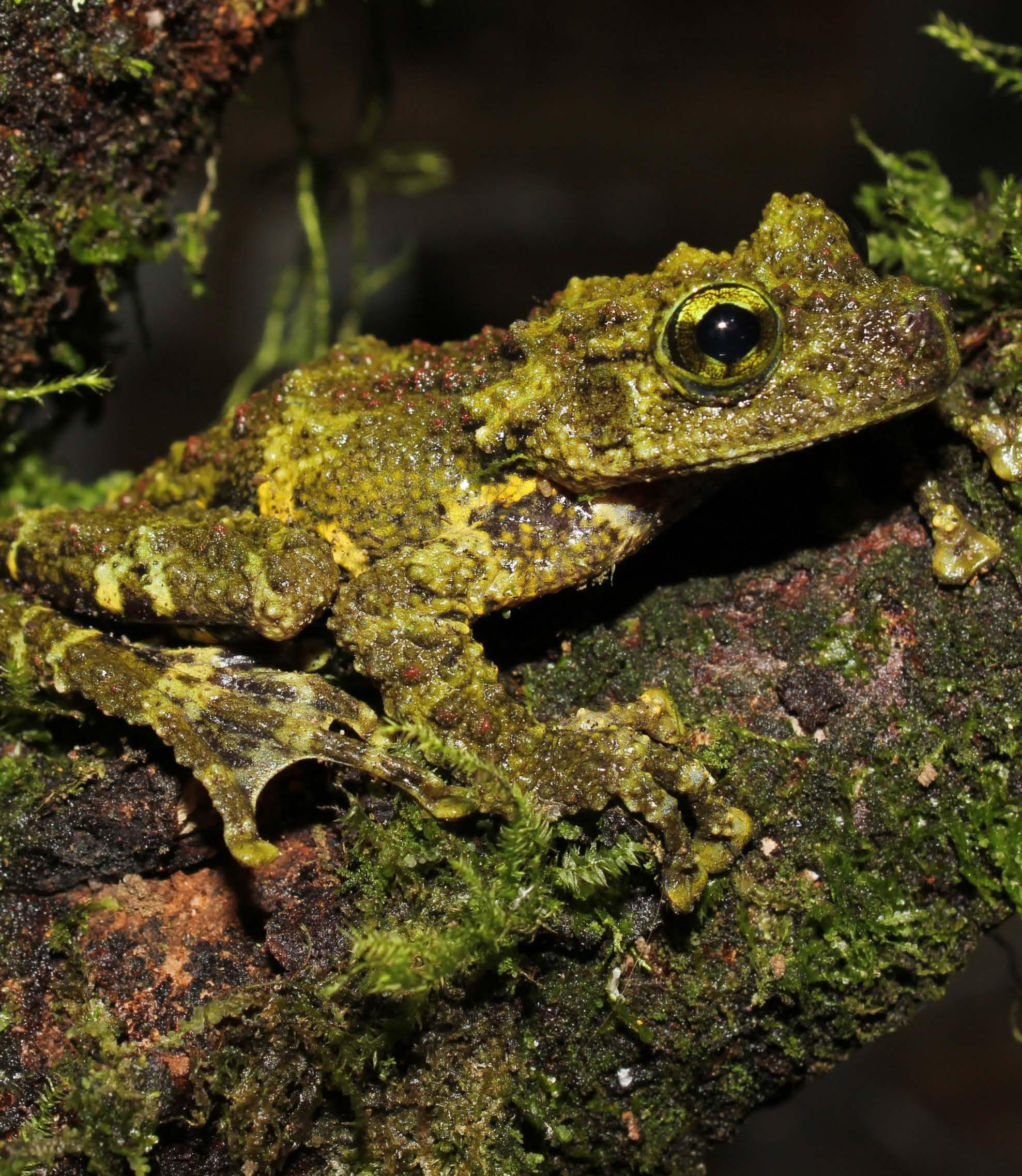
Published in 2023 by WWF © 1986 Panda symbol WWF - World Wide Fund For Nature (formerly World Wildlife Fund) ® “WWF” is a WWF Registered Trademark. WWF, Avenue du Mont-Bland, 1196 Gland, Switzerland. Tel. +41 22 364 9111 Fax. +41 22 364 0332 For contact details and further information, please visit our Asia Pacific website at www.asiapacific.panda.org
© Nguyen Thien Tao
A Khoi’s mossy frog (T. khoii) in Ha Giang province in northeast Viet Nam.


































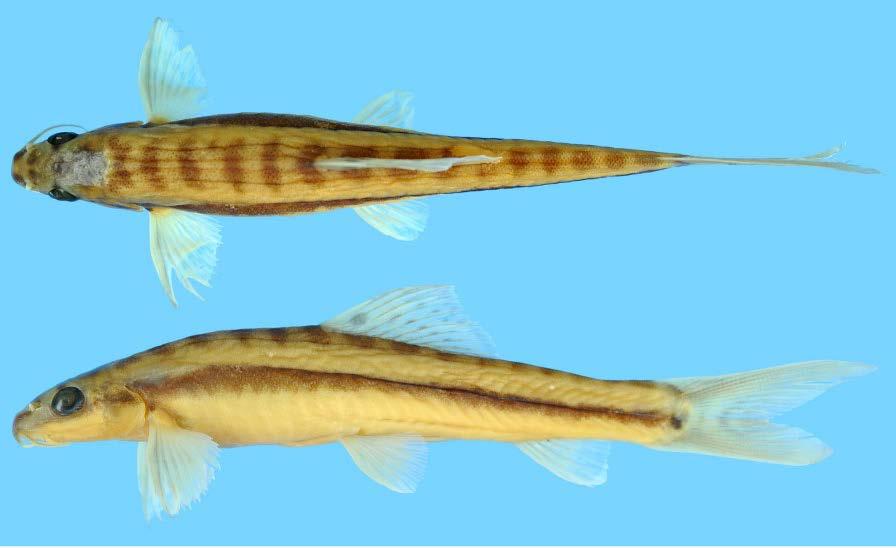







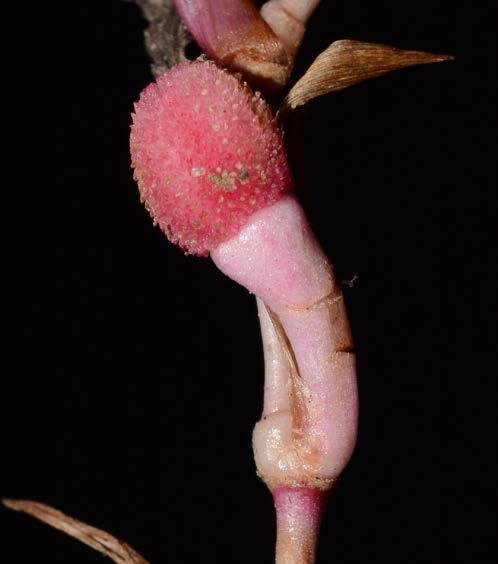





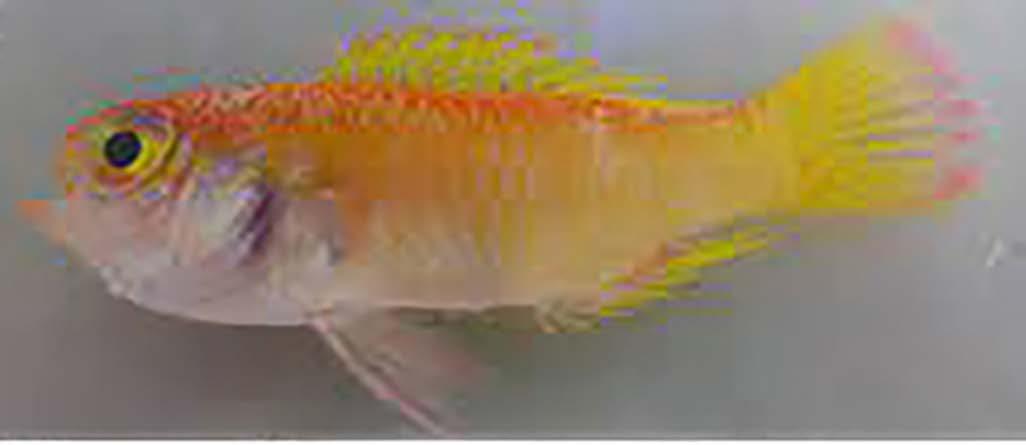





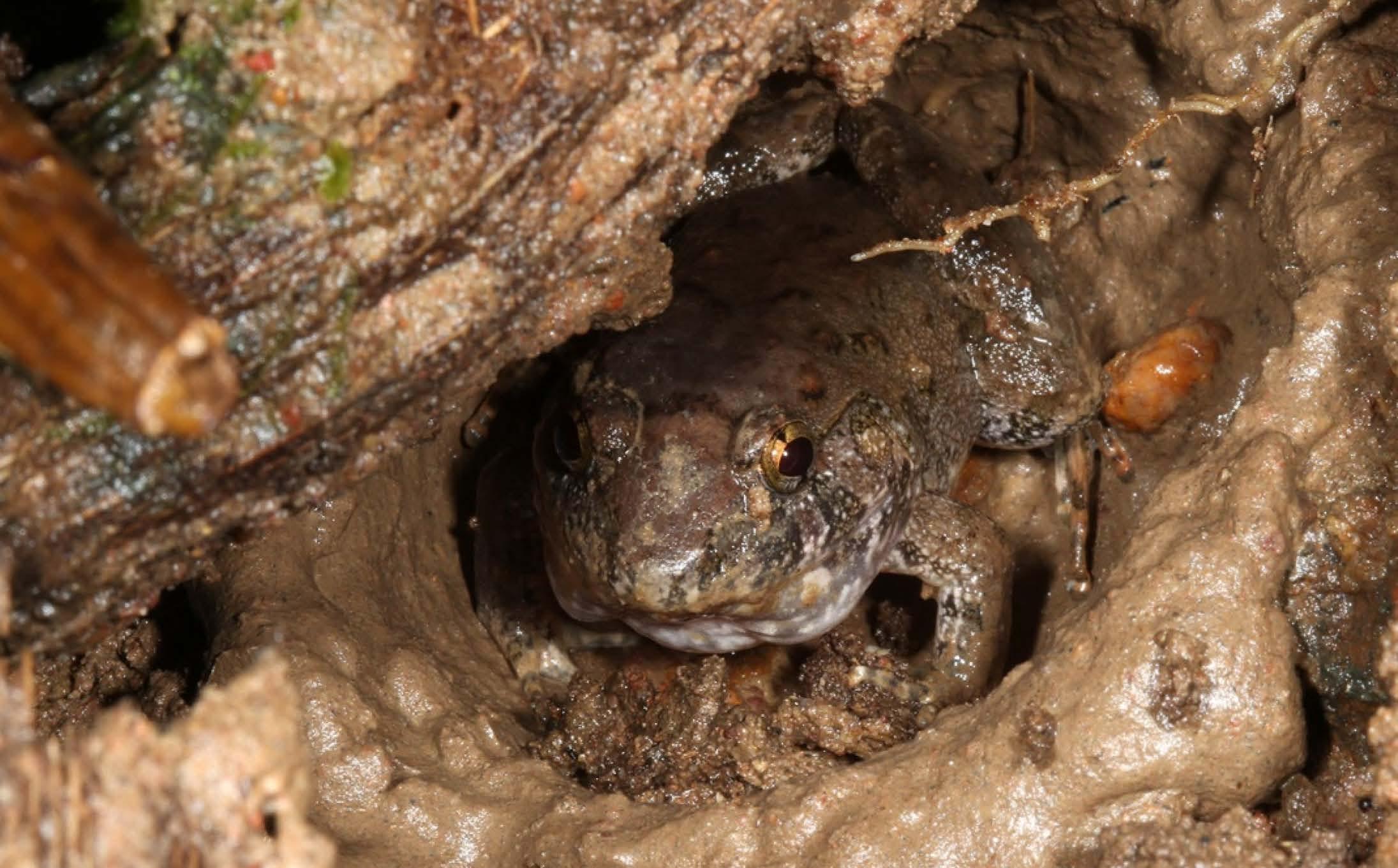





 © K.Yoganand / WWF-Greater Mekong
© K.Yoganand / WWF-Greater Mekong






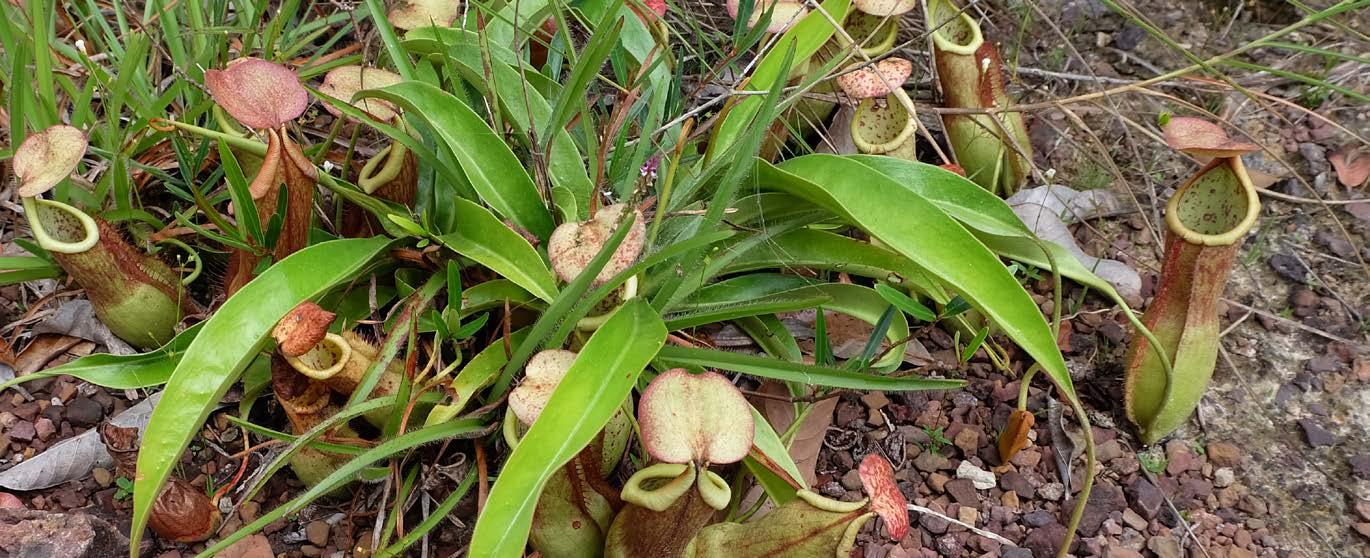



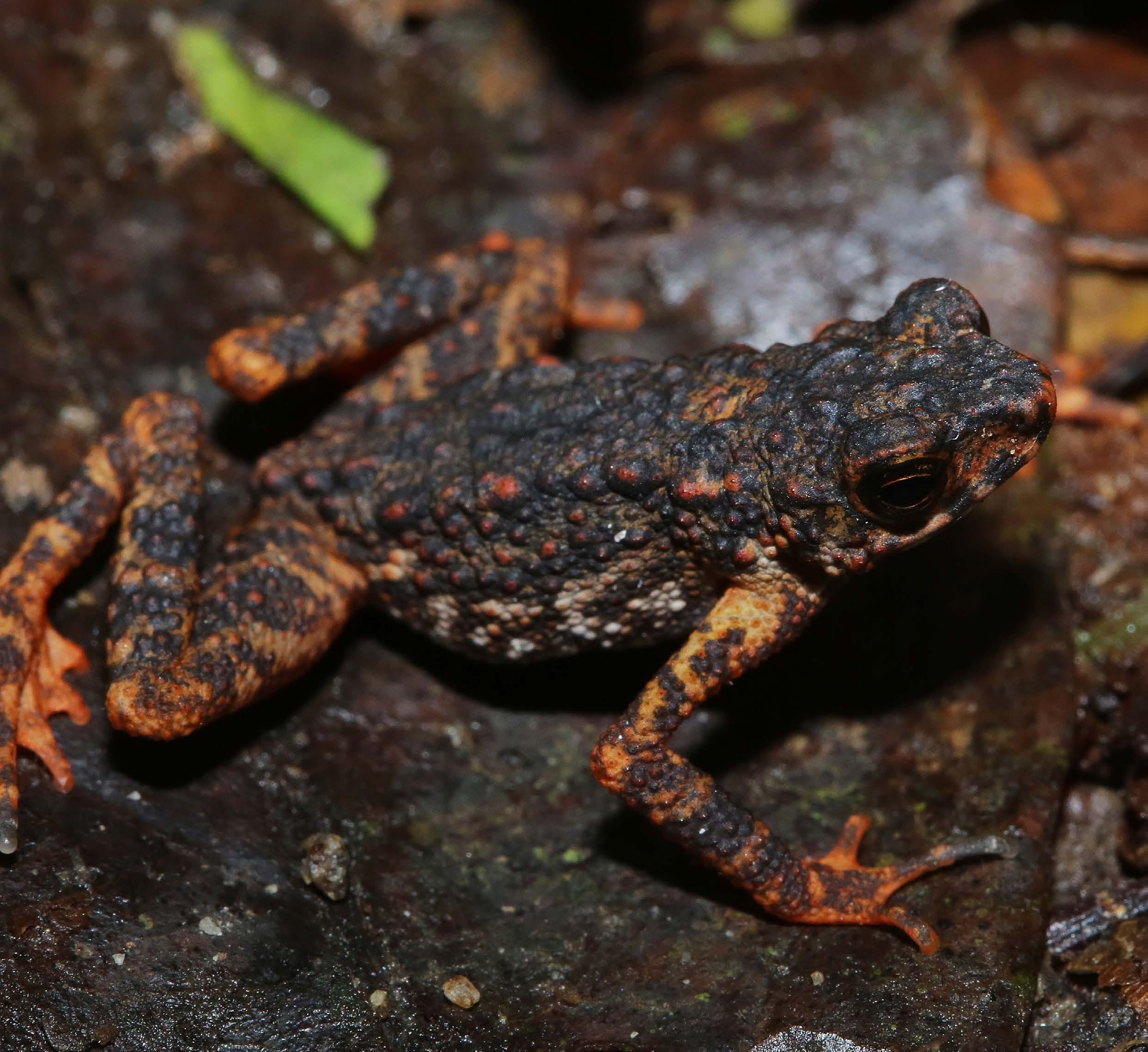

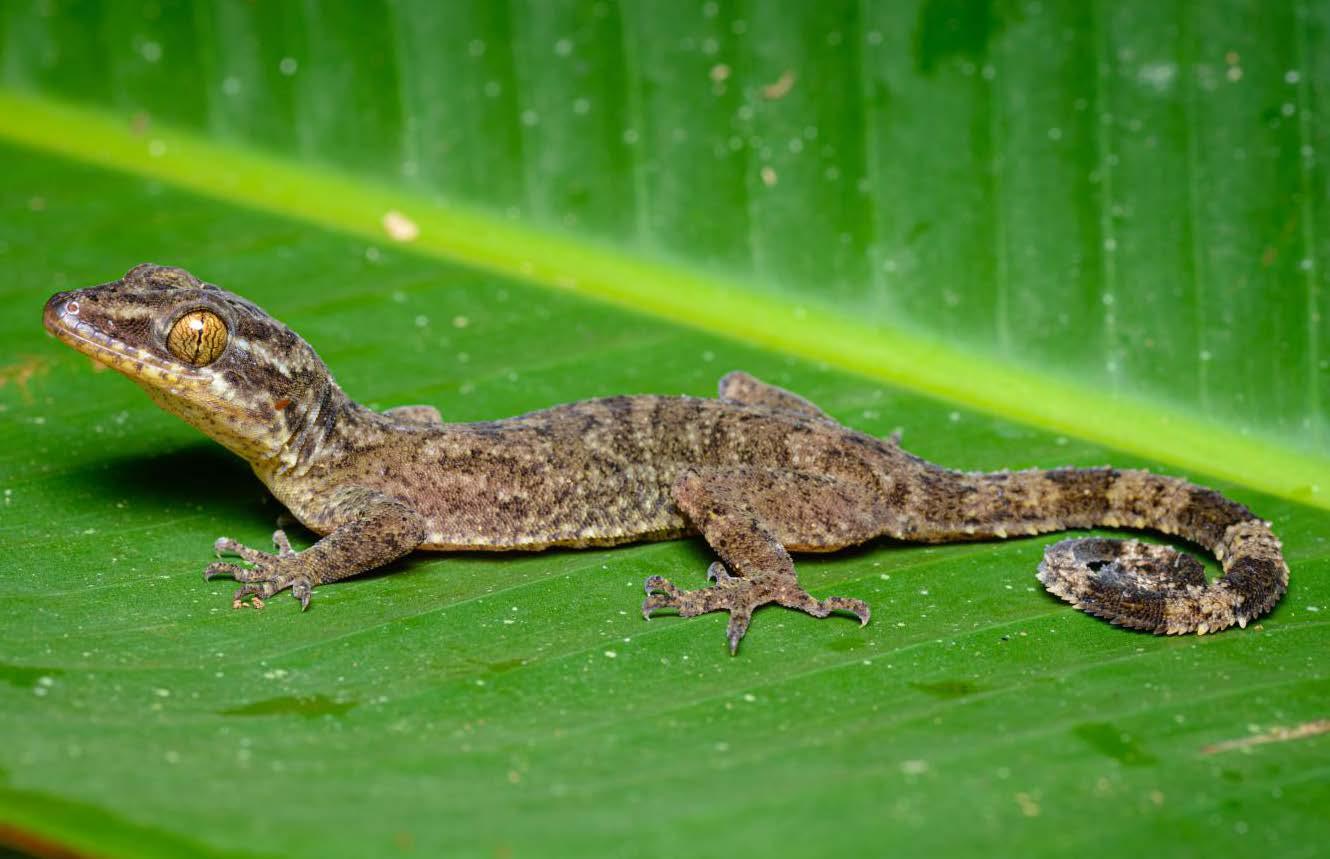










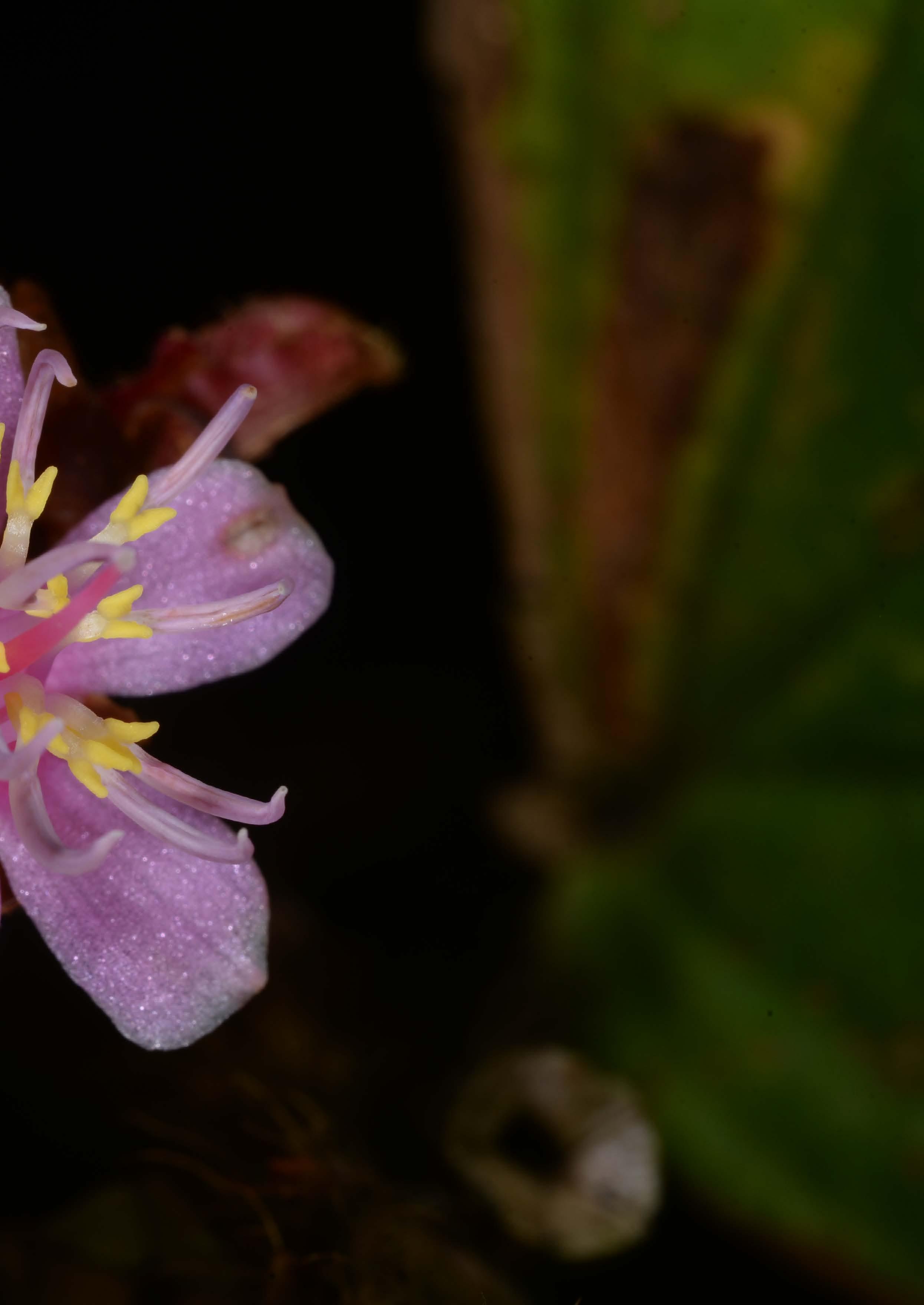


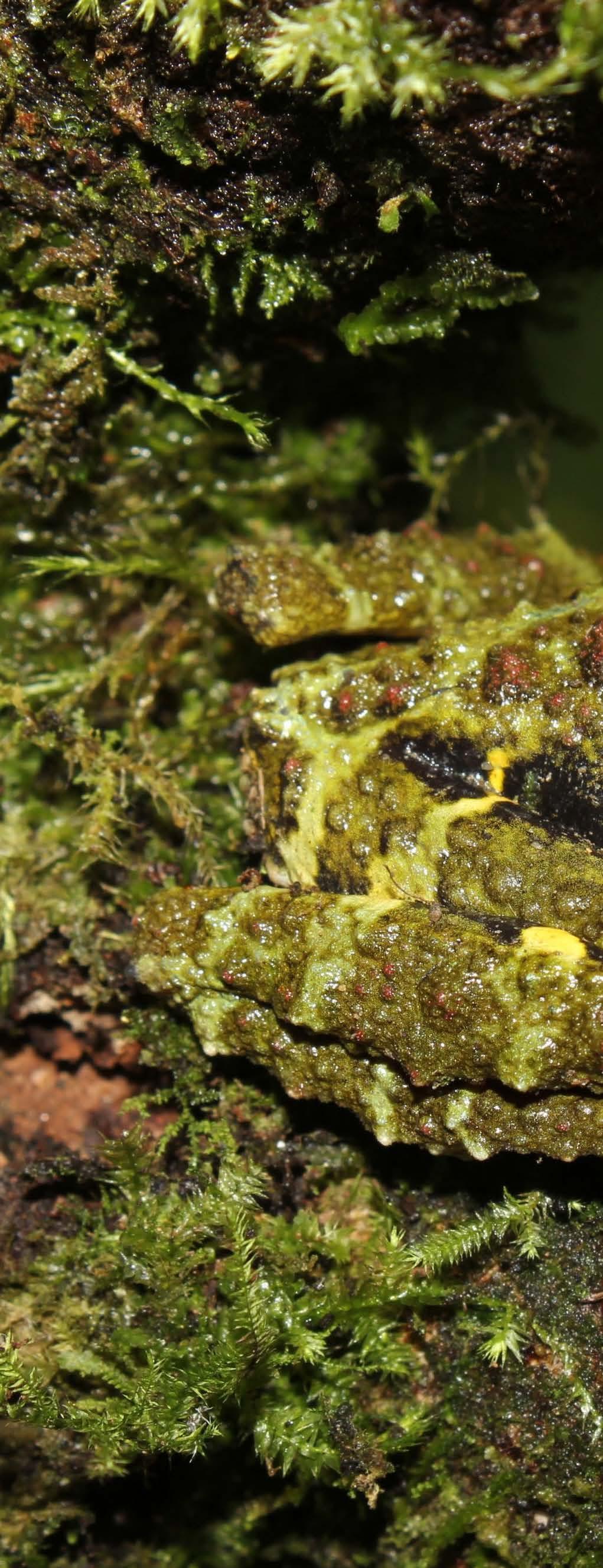





 Photo: © Shuichiro Tagane
Photo: © Shuichiro Tagane

















